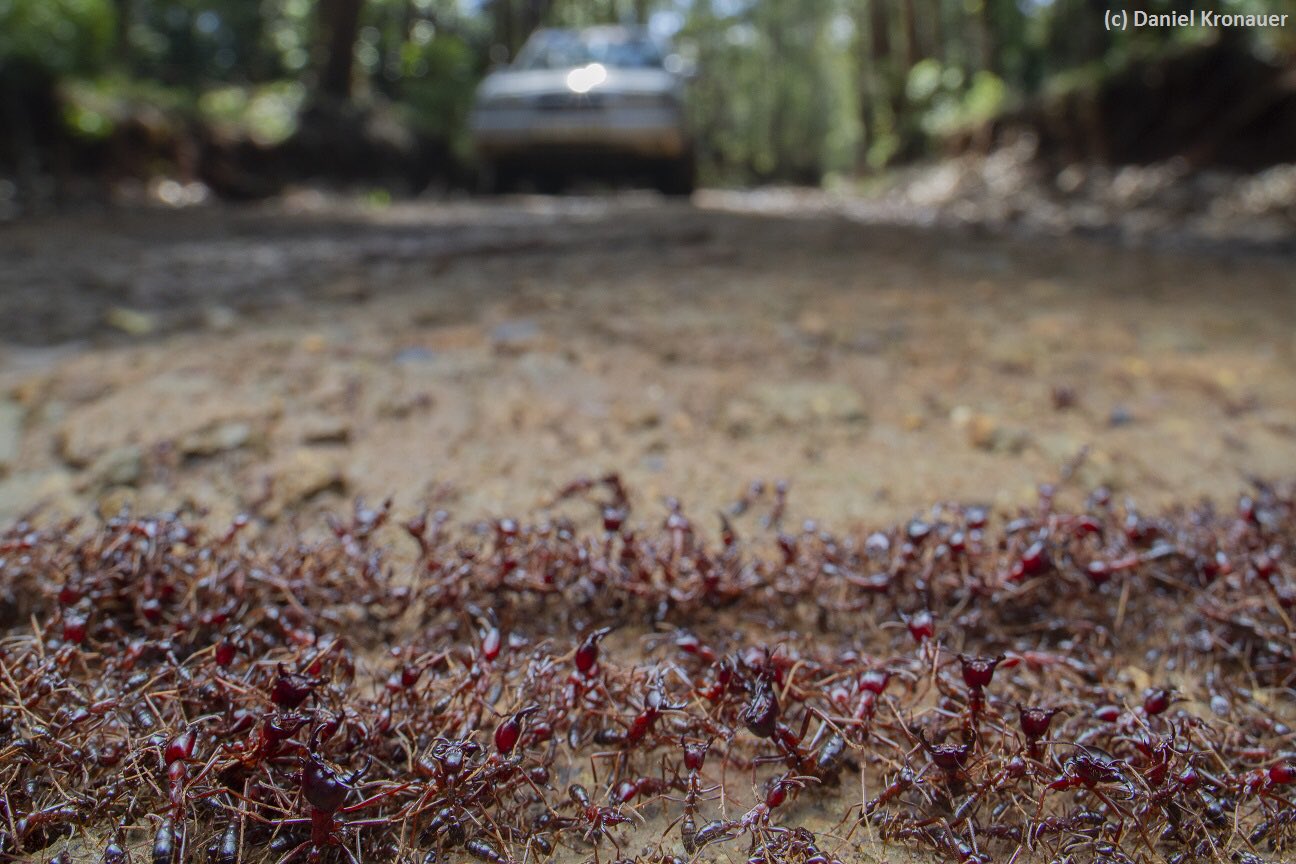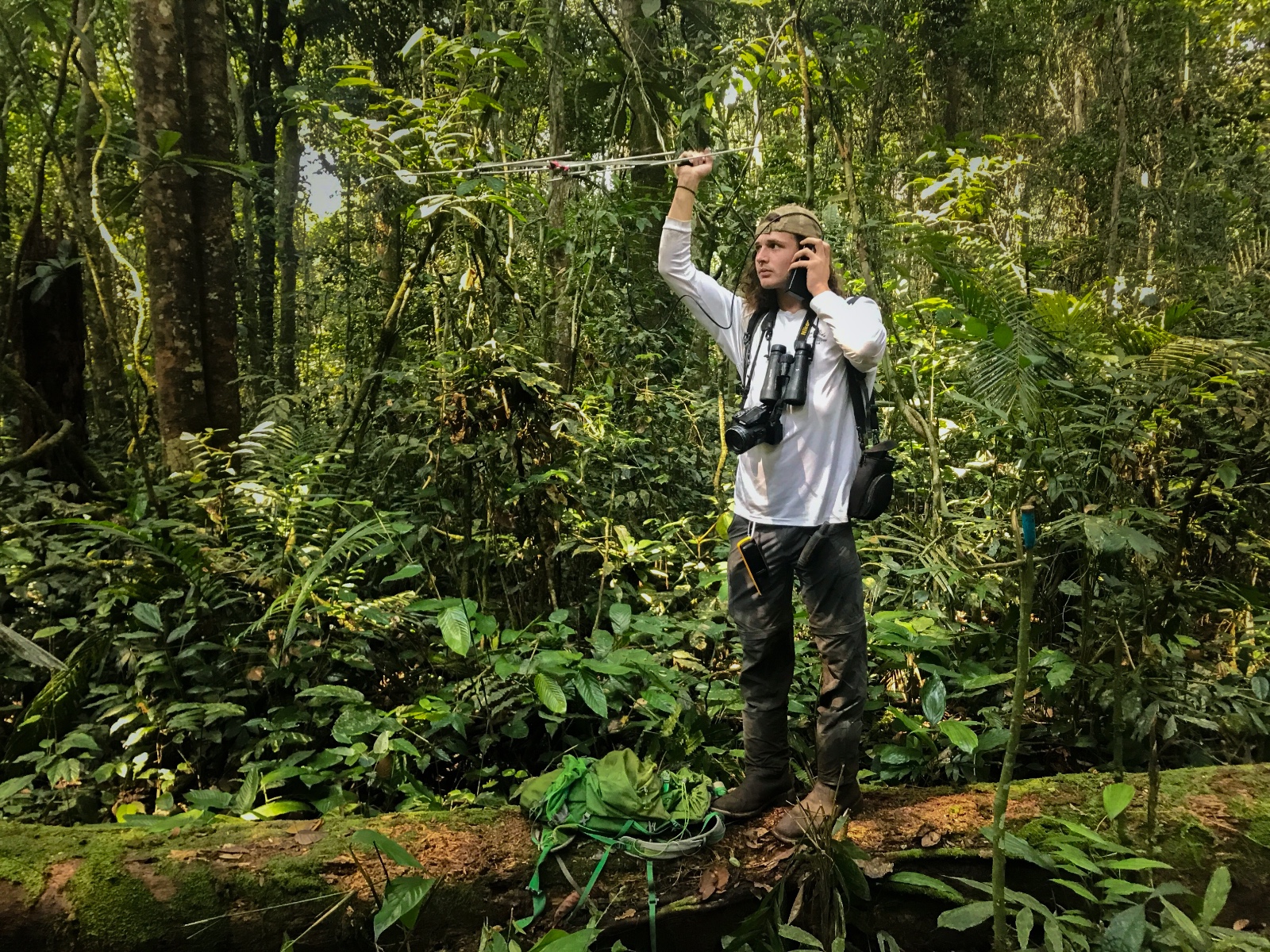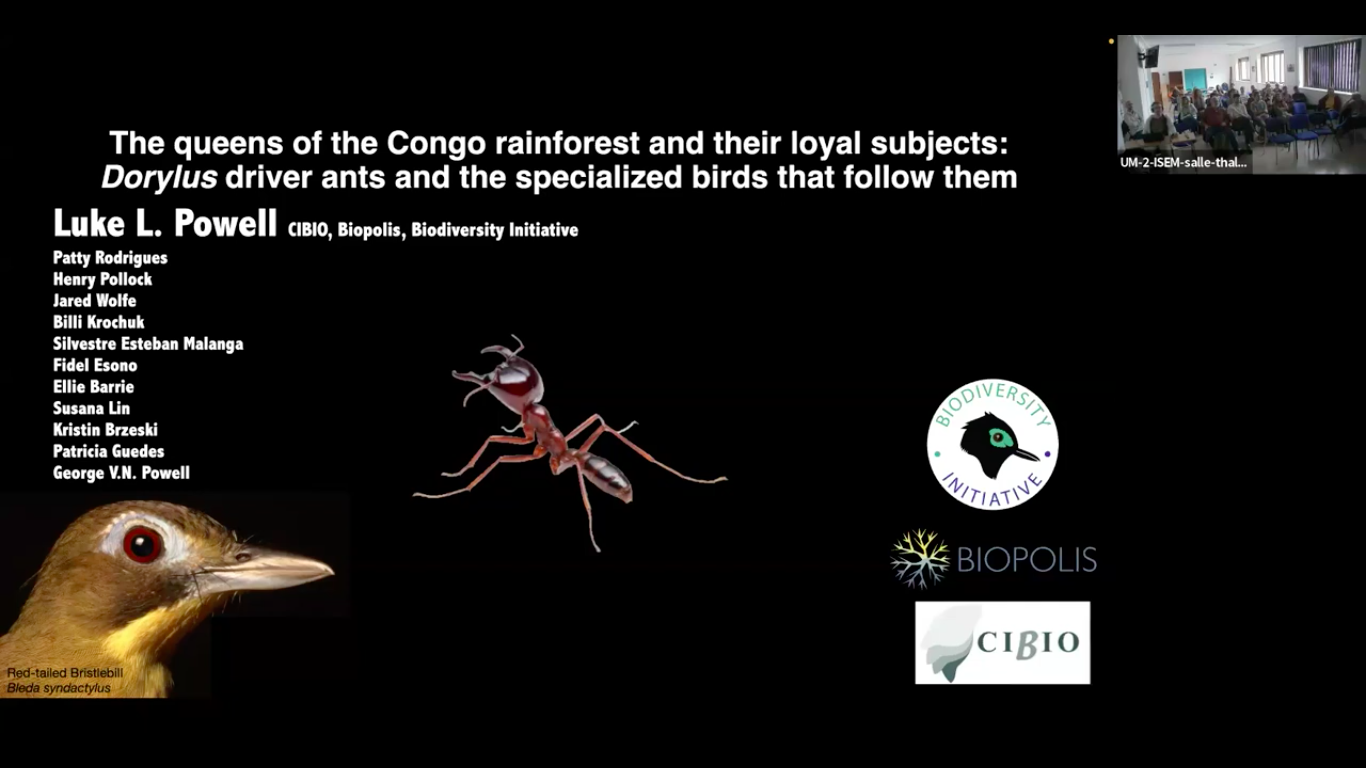Unraveling the intricate relationship between driver ants and their avian followers in the Congo Basin Rainforest
News
Through seven years of dedicated research, Luke L. Powell and colleagues have shed light on the fascinating interactions between birds and driver ants (Dorylus sp.) in the lush rainforests of Equatorial Guinea.

Despite their ecological significance, Afrotropical ant-following birds remain very poorly studied and are particularly vulnerable to forest degradation, as evidenced by significant differences in capture rates between primary and logged forests. Moreover, driver ants themselves heavily rely on intact forests as they avoid hot and open spaces. Thus, both driver ants and ant-following birds act as important indicators for healthy forests. The interconnected relationship between Dorylus ants and the birds that follow them provides critical insights for conservation, underscoring the indispensable value of the tropical forests upon which both species depend.


TROPIBIO-affiliated technician Nick Ramsey searching for ant-following birds. Photo: Luke L. Powell.
This research was presented by TROPIBIO ERA Chair Luke L. Powell in his lecture titled "The Queens of the Congo Rainforest and their loyal subjects” as part of the Montpellier Ecology and Evolution Seminars (SEEM) series, hosted by the Mediterranean Centre for Environment and Biodiversity Laboratory of Excellence (CeMEB LabEx). Building on this work, TROPIBIO’s newly appointed auxiliary researcher and entomologist, Maximillian Tercel, will further explore the ecology of Dorylus driver ants in Central African rainforests, seeking for a better understanding of how to protect these vital ecosystems.

Watch the presentation here

Photo: Gilberto Fernandez
Through seven years of dedicated research, Luke L. Powell and colleagues have shed light on the fascinating interactions between birds and driver ants (Dorylus sp.) in the lush rainforests of Equatorial Guinea.
Dorylus driver ants form massive colonies exceeding ten million individuals and are commonly known as army ants due to their aggressive foraging behavior. During bimonthly swarming events, they raid the forest floor in the quest for food and preying upon anything that crosses their path. While driver ants might be feared for their intimidating scissor-like mandibles, these remarkable creatures play a crucial role in sustaining a wide array of forest-dwelling species. This includes primates like Chimpanzees that use sticks to extract ants from their nests as a snack, alongside lesser-seen mammals such as pangolins.

Moreover, certain bird species follow the swarms to feed on insects fleeing from the relentless ants, creating a symphony of buzzing sounds throughout the forest. Patricia Rodrigues, ornithologist and PhD student at Louisiana State University, tries to understand the specialized behavior of these birds. Leveraging cutting-edge technology, such as 360-degree VR cameras, Rodrigues, Powell and their team gained fascinating new insights. Not only do the birds actively monitor driver ants’ nests in anticipation of the next big swarming, but they also respond to recorded calls of other birds reliant on the ants for food, for reasons yet to be fully understood. Using GPS and radio tags, the researchers tracked the birds' movements and found that these specialists have on average around ten times larger home ranges compared to typical understory birds in the rainforest, suggesting that they follow the extensive trails of the nomadic ants.

Size comparison between a Dorylus queen and one of her worker ants (Dorylus molestus, Kenya).
Dorylus queens are the largest ants on Earth and exhibit an impressive reproductive capacity, laying many million eggs throughout their lifespan. Photo: Daniel Kronauer
Dorylus queens are the largest ants on Earth and exhibit an impressive reproductive capacity, laying many million eggs throughout their lifespan. Photo: Daniel Kronauer
Moreover, certain bird species follow the swarms to feed on insects fleeing from the relentless ants, creating a symphony of buzzing sounds throughout the forest. Patricia Rodrigues, ornithologist and PhD student at Louisiana State University, tries to understand the specialized behavior of these birds. Leveraging cutting-edge technology, such as 360-degree VR cameras, Rodrigues, Powell and their team gained fascinating new insights. Not only do the birds actively monitor driver ants’ nests in anticipation of the next big swarming, but they also respond to recorded calls of other birds reliant on the ants for food, for reasons yet to be fully understood. Using GPS and radio tags, the researchers tracked the birds' movements and found that these specialists have on average around ten times larger home ranges compared to typical understory birds in the rainforest, suggesting that they follow the extensive trails of the nomadic ants.

Trail of army ants - Dorylus molestus, Mount Kenya. Photo: Daniel Kronauer
Despite their ecological significance, Afrotropical ant-following birds remain very poorly studied and are particularly vulnerable to forest degradation, as evidenced by significant differences in capture rates between primary and logged forests. Moreover, driver ants themselves heavily rely on intact forests as they avoid hot and open spaces. Thus, both driver ants and ant-following birds act as important indicators for healthy forests. The interconnected relationship between Dorylus ants and the birds that follow them provides critical insights for conservation, underscoring the indispensable value of the tropical forests upon which both species depend.
Fire-crested Alethe, Alethe castanea – a key ant-following bird. Photo: Luke L. Powell.

TROPIBIO-affiliated technician Nick Ramsey searching for ant-following birds. Photo: Luke L. Powell.

Watch the presentation here